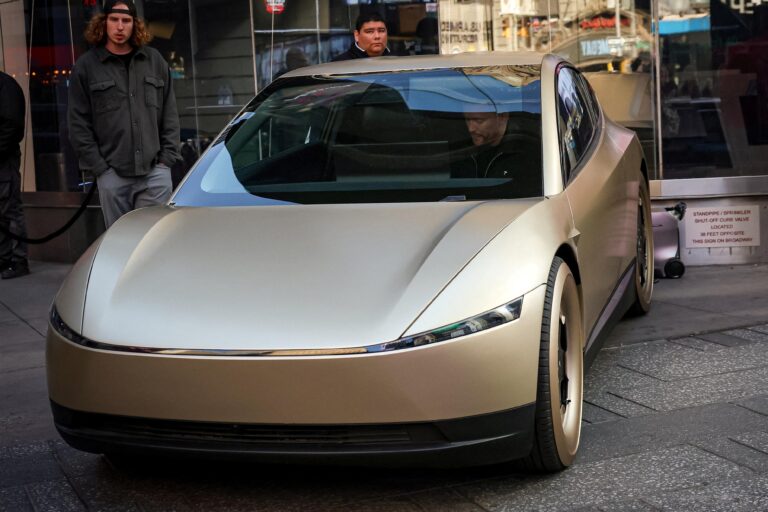As the United States experiences a slowdown in electric vehicle (EV) sales, major automakers are recalibrating their strategies to sustain momentum in the evolving automotive market. At the forefront of this shift, car manufacturers are increasingly turning to hybrids and more affordable EV models as a response to the current demand lull. This move, highlighted at recent Reuters Events, reflects a pragmatic approach to balancing innovation with consumer affordability, aiming to broaden the appeal of electric and electrified vehicles amid uncertain market dynamics.
Carmakers Shift Focus to Hybrids Amid US Electric Vehicle Slowdown
Automakers in the United States are recalibrating their strategies as electric vehicle (EV) adoption experiences a notable deceleration. Faced with lingering supply chain disruptions and hesitant consumer demand, manufacturers are increasingly turning their attention to hybrid vehicles and more affordable EV models. This shift aims to balance ecological ambitions with market realities, offering options that appeal to a broader demographic sensitive to price and infrastructure limitations.
Key trends shaping this pivot include:
- Increased investment in hybrid technology to bridge the gap between traditional combustion engines and full EVs.
- Launch of entry-level electric models with reduced price tags to stimulate demand.
- Expanded incentives and partnerships to improve hybrid and affordable EV accessibility.
| Strategy | Expected Impact |
|---|---|
| Hybrid Model Rollout | Broader market reach, smoother transition for consumers |
| Affordable EVs | Address price sensitivity, boost overall EV sales |
Strategies to Introduce More Affordable EV Models for Wider Market Appeal
Automakers are increasingly prioritizing cost-effective engineering solutions to lower entry prices for electric vehicles without compromising essential features. This includes simplifying battery chemistry and opting for smaller battery packs combined with efficient powertrains. By leveraging existing gasoline vehicle platforms to develop hybrid-electric models, manufacturers reduce research and development expenses, passing savings onto consumers. Moreover, production scale economies are expanding as carmakers form strategic partnerships and share components across multiple EV models, fostering wider availability of lower-priced options tailored to mass-market buyers.
Key Approaches Driving Affordability:
- Modular vehicle architectures to streamline manufacturing
- Increased use of entry-level lithium-ion batteries optimized for cost and longevity
- Incremental inclusion of advanced driver assistance features rather than premium ones
- Incorporation of hybrid variants as transitional options to full electric
- Government incentives shaping price accessibility in key markets
| Strategy | Impact on Price | Market Appeal |
|---|---|---|
| Platform Sharing | Reduces development costs by 15-20% | Enables competitive pricing in compact segments |
| Battery Size Optimization | Cuts manufacturing expenses by up to 25% | Extends affordability for urban commuters |
| Hybrid Integration | Offers lower initial investment vs. full EV | Attracts hesitant buyers seeking gradual transition |
Industry Experts Advocate for Policy Support to Boost EV Adoption
Leading voices in the automotive and environmental sectors are urging lawmakers to implement robust policy measures to accelerate the United States’ transition to electric vehicles (EVs). These experts emphasize that current incentives fall short of driving widespread consumer adoption, especially as the market faces challenges such as high upfront costs and limited charging infrastructure. They advocate for a combination of targeted subsidies, expanded tax credits, and investment in nationwide charging networks to create a more favorable environment for EV buyers.
Supporters of stronger policy intervention highlight several key areas needing attention:
- Increased affordability through expanded incentives that lower purchase costs for low- and middle-income buyers.
- Infrastructure development to deploy fast-charging stations along major highways and in rural areas.
- Consumer awareness campaigns to educate the public about EV benefits and dispel misconceptions.
- Support for domestic manufacturing to spur job growth and reduce reliance on imported components.
| Policy Proposal | Expected Impact |
|---|---|
| Expand EV tax credit to $12,500 | Makes EVs more affordable for budget-conscious buyers |
| $10 billion for nationwide fast charging | Ensures convenient long-range travel without range anxiety |
| National EV awareness campaign | Boosts consumer confidence and interest in EVs |
Balancing Innovation and Affordability Key to Sustaining US EV Momentum
As the US electric vehicle market experiences a temporary slowdown, automakers are recalibrating their strategies to maintain momentum by prioritizing hybrid technology alongside more affordable EV options. Industry leaders recognize that innovation alone cannot drive adoption without addressing consumers’ price sensitivity, especially as inflation and supply chain disruptions have tightened wallets. By introducing hybrids, manufacturers are offering a pragmatic middle ground that appeals to a broader demographic still hesitant to fully commit to all-electric drivetrains.
Cost-efficiency has become a crucial pillar in sustaining growth, with carmakers actively developing entry-level EV models equipped with reliable battery technologies and simpler designs. These models aim to reduce upfront costs while adhering to stricter emissions standards, creating a balanced value proposition. Key market insights reveal this dual approach as the most viable path forward:
- Hybrids: Bridge technology easing transition to full electrification
- Cheaper EVs: Expand accessibility to price-conscious buyers
- Increased production: Scale economies reducing unit costs
- Investment in innovation: Enhancing battery life and charging infrastructure
| Approach | Benefits | Challenges |
|---|---|---|
| Hybrids | Eases range anxiety; reduces emissions | Maintaining battery and engine efficiency |
| Cheaper EVs | Broader market penetration; lower entry price | Balancing cost with performance and features |
To Conclude
As the U.S. electric vehicle market faces a temporary slowdown, automakers are strategically pivoting towards hybrids and more affordable models to sustain consumer interest and navigate economic uncertainties. This approach highlights the industry’s adaptive response to evolving market demands and regulatory pressures, underscoring a transitional phase in the broader shift toward electrification. Observers will be watching closely to see how these developments influence the pace of EV adoption and the competitive landscape in the months ahead.




